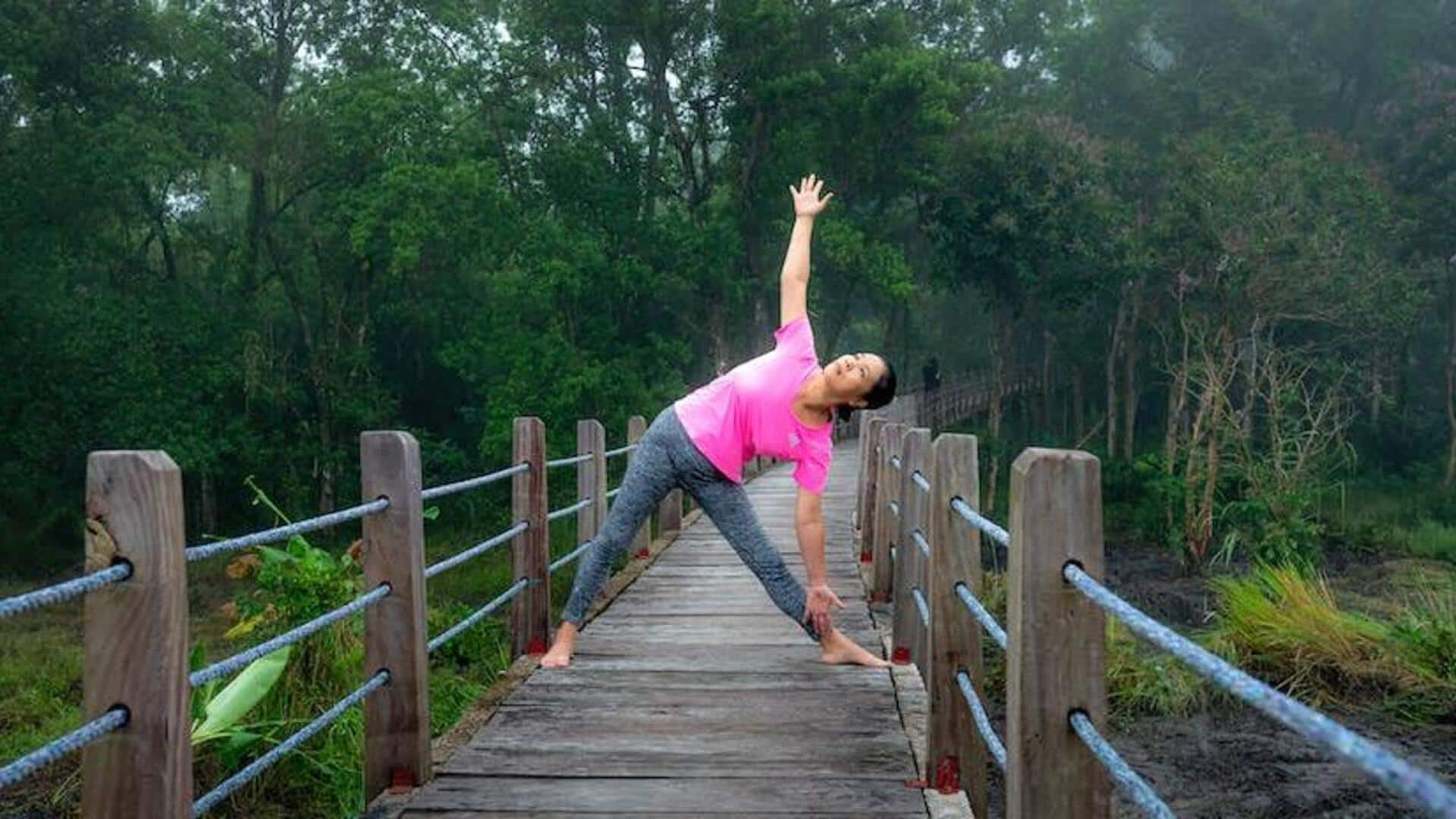
Trikonasana or triangle pose: Step-by-step process and health benefits
What's the story
Trikonasana is a standing posture exercise that offers flexibility, balance, and strength to the body. It is one of the most common Hatha yoga poses that you can do to enjoy benefits for the whole body, both internally as well as externally. Delve deeper into this yoga asana as we discuss its history, step-by-step process, health benefits, and precautions.
History
History: The pose was first described in the 20th century
The name of this asana is an amalgamation of two Sanskrit words trikona (meaning triangle) and asana (meaning pose or posture). It was first described in the 20th century by the iconic Indian yoga teacher, Ayurvedic healer, and scholar Tirumalai Krishnamacharya. Even his book Yoga Makaranda, which was published in 1934, features trikonasana among the 42 yoga poses it talks about.
Process
How to do: Get these steps right to practice it
Stand with your feet wide apart. Turn your right foot outward while your left foot faces inward at a 45-degree angle. Bending your back to the right, bring your right hand down to the floor. Extend the left arm toward the ceiling, just parallel to the right arm. Gaze up toward the ceiling and hold it for a minute. Repeat on the opposite side.
Health benefits
Health benefits: Helps improve digestion; tones your limbs and hips
The benefits of doing trikonasana daily are many, the top one being that it helps you open up your arms, chest, shoulders, and spine. At the same time, it also tones your ankles, knees, calves, hamstrings, groin, and hips. Those who practice, experience a reduction in their stress and anxiety levels. It also helps improve your digestion and gives relief from back pain.
Precautions
Who should avoid: People with BP and diarrhea should skip
If you are suffering from health conditions like migraine, high blood pressure, or diarrhea, avoid practicing trikonasana. Those with neck, shoulders, back, or hip injuries should also refrain. Also, check with your doctor in case you have recently had surgery. Pregnant women should only practice if permitted by a doctor and under the special guidance of a professional yoga teacher.